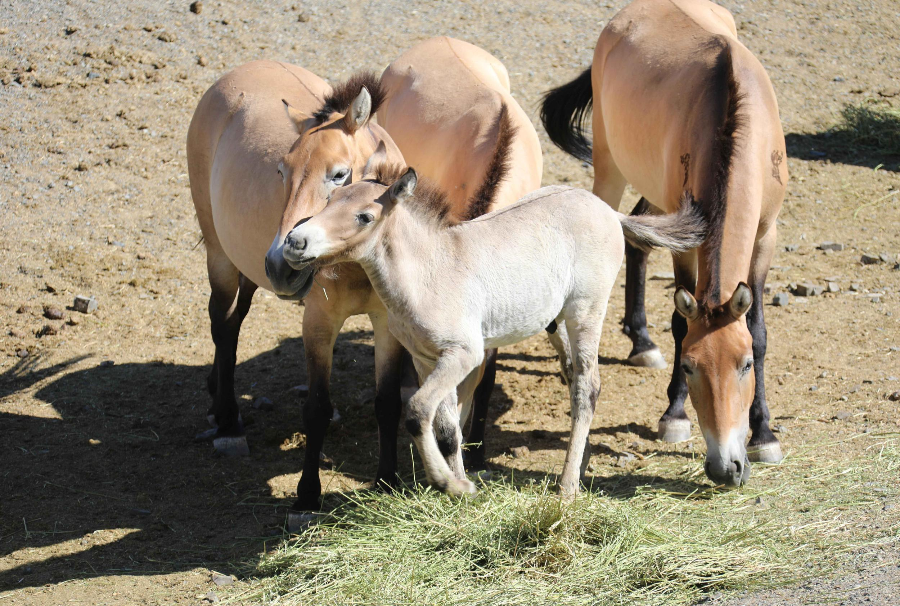
Photo taken on July 6, 2019 shows wild horses at a wild animal park on southern foot of Tianshan Mountain in northwest China's Xinjiang Uygur Autonomous Region. (Photo by Zhang Hefan/Xinhua)
URUMQI, May 25 (Xinhua) -- Apart from their routine feeding duties, horse breeders in northwest China's Xinjiang Uygur Autonomous Region have engaged in shaping up their overweight Przewalski's horses.
Przewalski's horses are the only surviving horse subspecies never to have been domesticated. In China, they are mainly found in Xinjiang's Junggar Basin.
Staff with the Xinjiang Wild Horse Breeding and Research Center have decided to carry out training on the horses being held in captivity, to help them lose weight, keep healthy and adapt to life in the wild.
Because of the horse population growth, the old stables housing the Przewalski's horses get crowded, which has limited their activity, caused them to become obese and lowered their reproductive rates.
Furthermore, crowded stables lead to frequent fights and injuries among the horses. They are also getting more vulnerable to infectious diseases and parasites, said Ma Xinping, head of the research center.

Photo taken on July 6, 2019 shows wild horses at a wild animal park on southern foot of Tianshan Mountain in northwest China's Xinjiang Uygur Autonomous Region. (Photo by Zhang Hefan/Xinhua)
There are about 2,000 Przewalski's horses in the world today, even less than the number of giant pandas. The center is a main habitat of the wild horses, with a horse population of 439, with 91 in captivity, 240 in the wild and 108 in semi-captivity.
Since 1986, when 24 Przewalski's horses were imported from Britain, Germany and the United States, researchers of the center have bred the horses in captivity.
After 34 years, the center is now Asia's largest of its kind and is taking more effort to help the horse stay fit.
According to Ma, the first batch of 25 captive-bred horses have undergone "weight loss training." The center allows them to run all day in an enclosure of where it has less feed and artificial monitoring.
Meanwhile, the staff has provided forage and water supplies at unfixed positions in the enclosure so that the horses can walk around and find food under the condition of a simulated natural environment.
"The semi-wild training can help reduce the horses' dependence on stables and breeders, allowing them to make a smooth transition from captive to free-living status and finally to have the ability to live independently in the wild," Ma said.
The horse species was named after its Russian discoverer in the 1880s.
